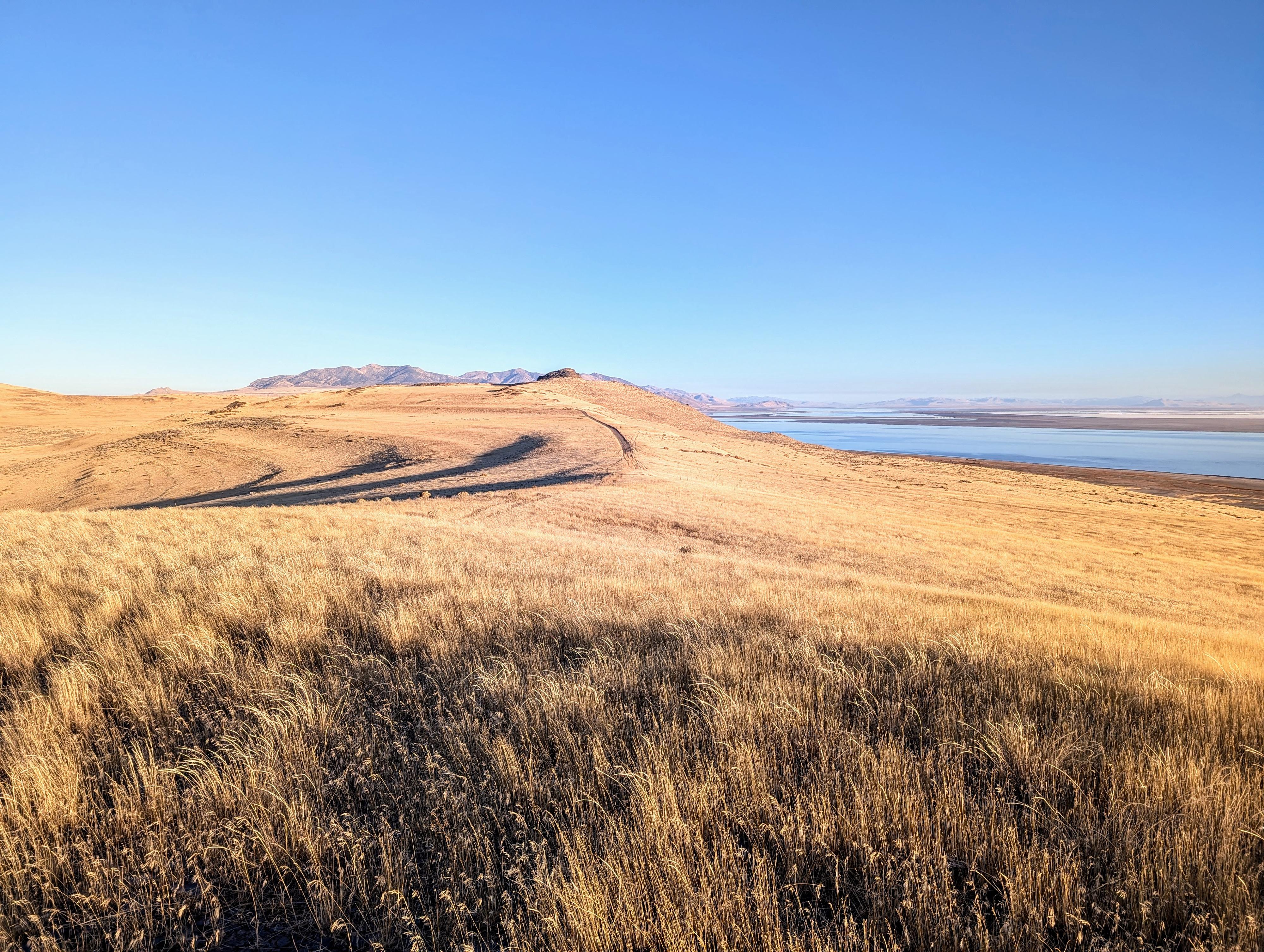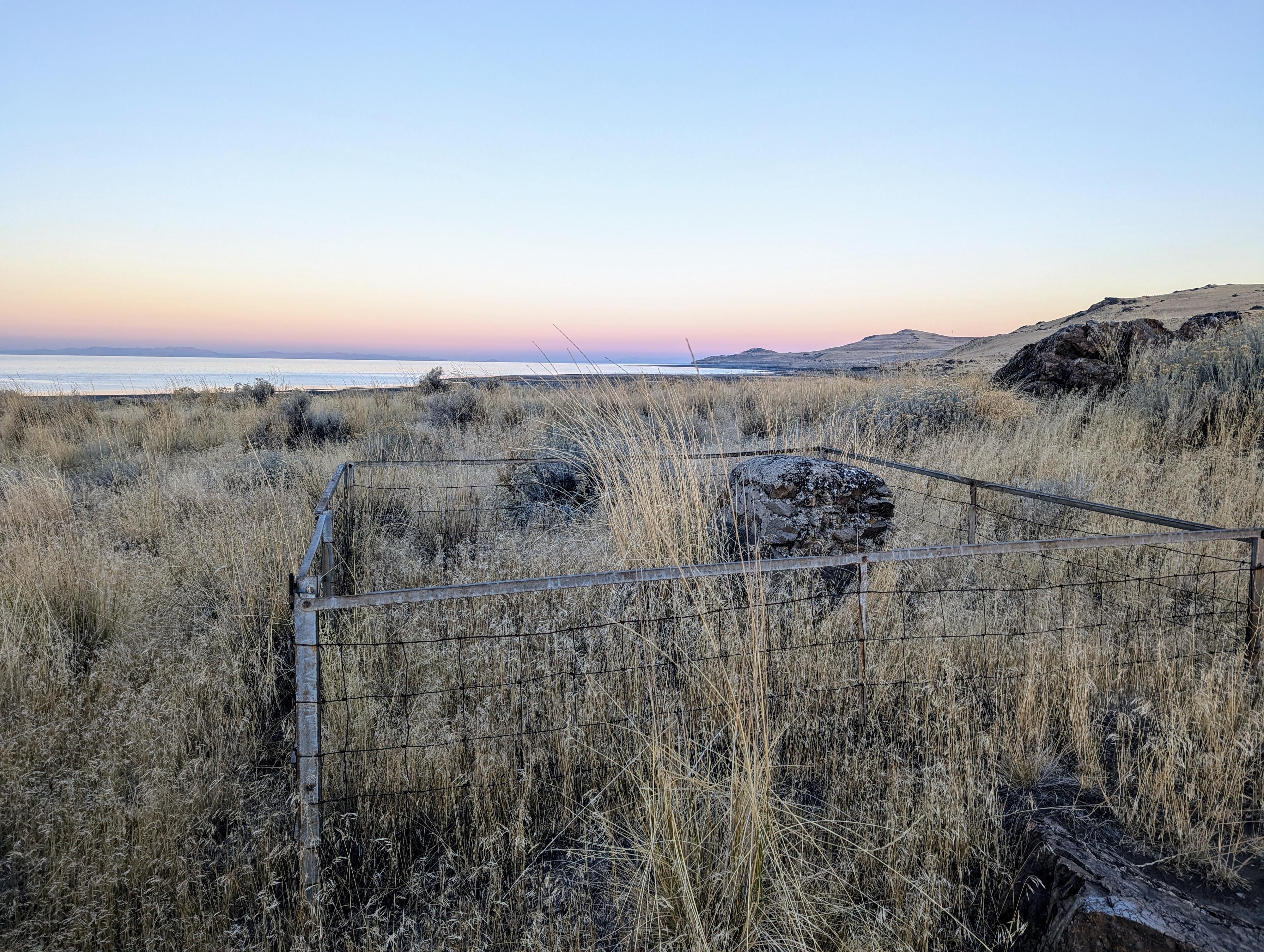 Hiking Fremont Island
Hiking Fremont Island
Great Salt Lake
Overview
|
Fri 53 | 34 |
Sat 59 | 35 |
Sun 67 | 43 |
Mon 66 | 45 |
Tue 68 | 44 |
| View Full Weather Details | ||||
|
Fri 53 | 34 |
Sat 59 | 35 |
Sun 67 | 43 |
Mon 66 | 45 |
Tue 68 | 44 |
| View Full Weather Details | ||||
I find the Great Salt Lake a fascinating place. The scenery and uniqueness of the lake are interesting, but the history and stories of the people who have tried to live and make a life there I find even more fascinating. Fremont Island is one of those places on the lake that is steeped in history. I had wanted to visit for several years, but visiting requires quite an effort. At about 18 miles round-trip from Antelope Island and across the sandbar just to REACH the island, this is an outing for experienced outdoors people in excellent shape. Some important information to know before attempting a visit to the island.
How To Visit
First and foremost, there are a few ways to visit the island. If you happen to be a backcountry pilot, there are two dirt landing strips on the island and this would be the easiest way to visit. Most of us aren't backcountry pilots, leaving two other options to visit, by boat or by land.
By boat, the closest marina is on Antelope Island. Recent years (as of 2024) have left the water levels too low to use that marina. To visit by boat, you will need a very shallow draft boat to reach the island, the water is only 1-2 feet deep for quite some distance around the island. Canoeing or kayaking out are strongly discouraged because of the distance and changing weather conditions.
Finally, when the lake is below 4,194 feet in elevation, a sandbar extends from the Antelope Island Causeway to Fremont Island. This is probably the most common way people visit, the "overland" route. As of 2024, the lake has been below 4,194 feet for quite some time.
This description assumes you are using the sandbar route.
When To Visit
The sandbar is great when dry, and an absolute muddy mess when wet, and the entire route has no shade or water. Both of those factors greatly limit the time to visit. Late fall and early winter would be my recommendation, but you need to visit during a dry period. My first attempt was after a rainy fall, and I didn't make it more than a few hundred feet from the paved causeway in the mud before turning back. My successful visit was also in the fall, but after a several week dry period. The second trip I encountered no mud and much easier conditions. If you encounter mud, the trip will be much, much more difficult. Some visit in the winter during freezing spells when, hopefully, the mud is frozen, but I have heard mixed reviews on how well that works. Winter would be colder with much shorter days.
Time Needed
My trip to the island, visiting all the sites I wanted to visit, was about 25 miles round trip. I used a fat bike to get to the island, then left it and walked while on the island. All-in-all, my trip took 5.5 hours. About 1 1/4 hours from the Antelope Island marina parking area to the island on the bike, 3 or so hours hiking and exploring on the island, then another 1 1/4 hours back to the parking area. To be clear, this was in optimal conditions with no mud, good temps, and firm sand. Conditions can GREATLY extend this time!
People that hike to the island often take 10-12+ hours, especially if the sandbar is muddy. This usually means a dawn or pre-dawn start and being out all day.
Whichever approach you choose, be sure to have plenty of water and food.
History
1843 - John C. Fremont, along with a group including Kit Carson, were the first known explorers of European descent to visit the lake. The lack of water and other resources led Fremont to name the island Disappointment Island. During this visit, Kit Carson carved a cross into a rock near the high point of the island, which can still be seen.
1850 - Capt. Howard Stansbury surveyed the Great Salt Lake and named the island Fremont Island. The name eventually stuck.
1859 - Dan Miller and a friend use the island for sheep and call the island Miller's Island. One of the three named hills on the island is now called David E. Miller hill, but seems to be named after a state geography official, not Dan Miller.
1862 - Jean Baptiste, a criminal found guilty of grave robbing more than 300 graves in Salt Lake City, is exiled to Fremont Island. In a fascinating turn of events, when cattlemen visited the island 3 weeks later to inventory animals, Baptiste was gone. It is assumed he escaped by using logs and timbers left on the island to build a raft and float off the island, but his fate is unknown.
1886 - Judge Uriah J. Wenner, diagnosed with tuberculosis, moved his family to the remote island, hoping it would help his health. He lived there until his death in 1891 and was buried on the island. His wife, Kate, later left, remarried, and after her death in 1942, her ashes were placed next to Uriah’s on Fremont Island. They left a lasting mark on the island with a grave site and ruins of their home.
In more recent times, the island had a small hunting cabin on it and other short term uses. The south end of the island has quite a collection of old refuse on it from the different groups that used it. There are many old logs, fences, a tractor, the hunting cabin, parts of a water system, etc…
2020 - The island becomes owned and managed by the State of Utah. This change allows the public to visit the island, and helps protect it for future generations. For current information and rules from the DNR, see their site https://ffsl.utah.gov/state-lands/great-salt-lake/fremont-island/
Full Details
Login For Full Details!
- OR if you are not yet registered -
Register
(It is free and easy.)


